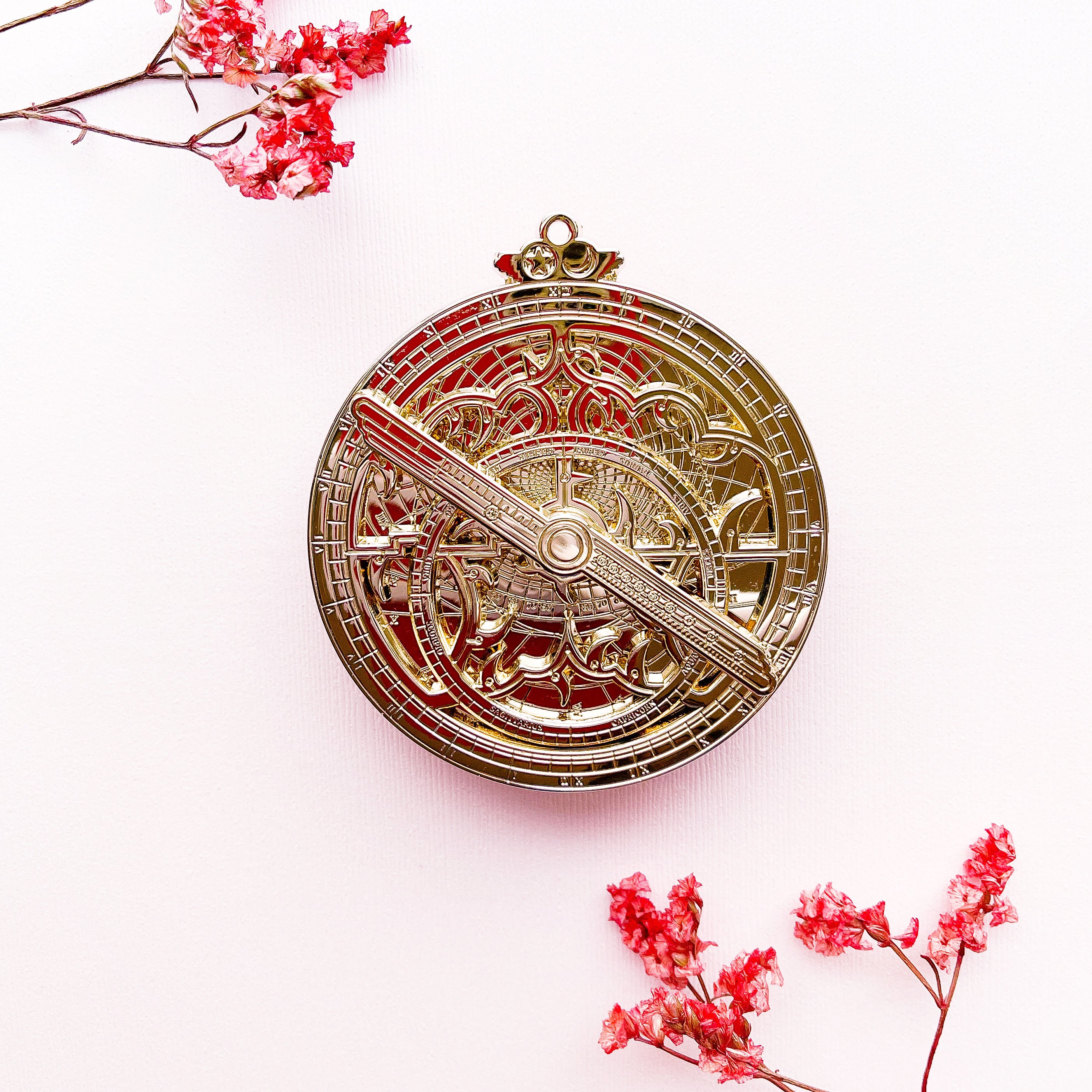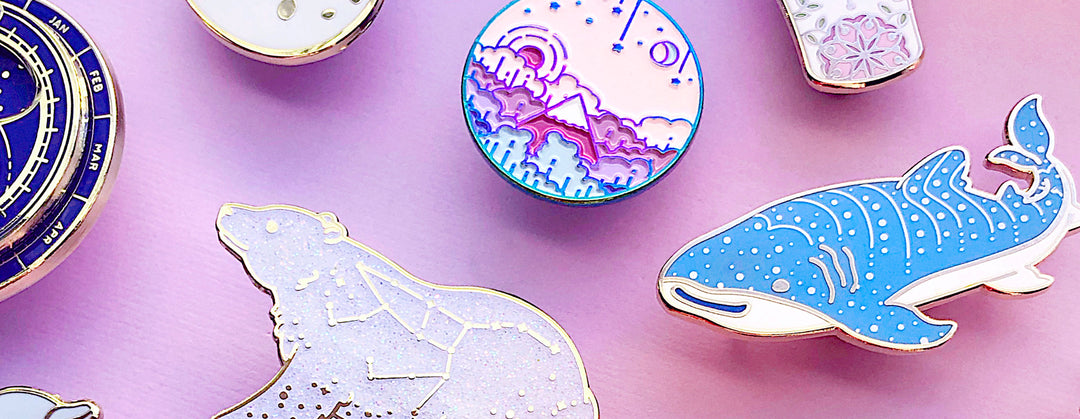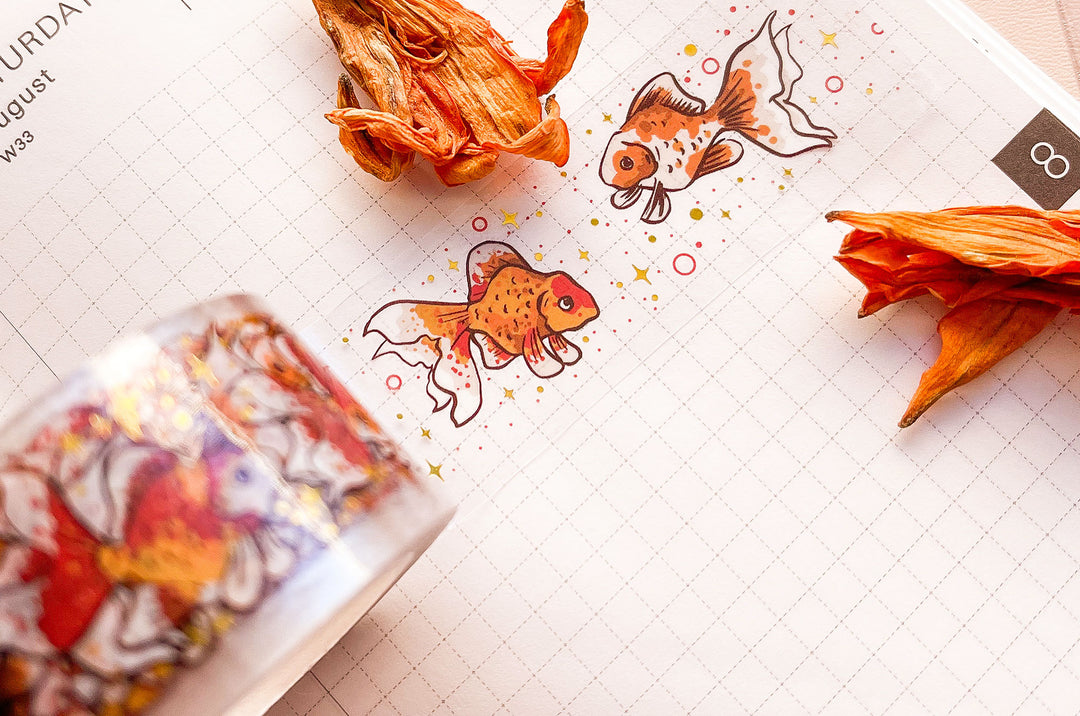Types of Pin Backs
There a bunch of different back clutches to keep your enamel pins securely fastened. They’re all useful for a different reason and some are a little pricier than others because of materials that go into making them. The following are the different types of back clutches for your enamel pins.
 |
Military or Butterfly Clasp Clutch One of the most commonly seen clutches for enamel pins. The butterfly clutch features two little pieces of metal on the clutch that you squeeze together to take the clutch off the spike or put the clutch onto the spike. These often come in a variety of metal colors, usually matching the base metal of the enamel pin. |
 |
Rubber PVC Clutch Another commonly seen clutch for enamel pins. Rubber PVC Clutches are easy to put on and take off of pin spikes and come in a huge variety of colors and new, cute shapes have started appearing on the market recently. PVC rubber clutches can even be made to match the enamel colors on a pin. |
 |
Flathead Locking Clutch These clutches are very useful for keeping your pin secure. They feature an internal locking mechanism that grips the spike of your pin. Flathead locking clutches are easy to put on a spike, and to take them off you just pull the back out a little to pull the clutch off. |
 |
Ball Locking Clutch Very similar in functionality and use to the Flathead Locking Clutch, the Ball Locking Clutch also features an internal locking mechanism to keep your pins safe and secure. These clutches are sometimes referred to as jewelry clutch because they tend to look a little fancier than their Flathead Clutch cousins. |
Other types of pin backs that are possible include...
Safety Pin Clutch
These clutches are similar in appearance to the backings you might see on a button or safety pin. They’re very secure and, because of their design, help prevent your enamel pin from rotating during wear and use.
Magnet Clutch
Magnet clutches come in two pieces and can be affixed to a surface without putting a hole through it. These clutches are great for thinner surfaces and depending upon how the magnet is added, some pins can even be used as regular magnets.
Stem Style Lapel Pin Clutch
These are pin clutches that are long, thin needle-like stems that extend below a lapel pin. The stem ends in a point that is often capped with a metal cap or rubber cap.
Which Pin Back is Right For Me?
If you are planning to wear your pins on a hat, shirt or any other location where the pin may come in contact with your skin, I recommend using the rubber pvc pin backs. Although these are less secure, they are more comfortable and will not cause chafing. It's especially important to use rubber pvc pin backs if you are planning to wear your pin on a hat that fits snugly because the metal of the locking pin backs may cause some discomfort.
If you are planning to wear your pins on an ITA bag, backpack, lapel of a shirt, on a loose fitting shirt, or any location that does not come in contact with your skin, I recommend the locking pin backs. They will secure your pin in place, and make sure you don't lose it. Locking pin backs are particularly helpful when it comes to wearing pins on bags because of how often bags are jostled during day-to-day usage.
If you are planning to display the pin on a pin board or pin banner, I recommend using the rubber pin backs. Pin boards do not require a backing and it's easier to put on and remove rubber pin backs than locking ones. Pin banners probably don't shift or get jostled very often so the rubber pin backs will secure your pin in place safely without much hassle.
If you are planning to wear your pin on a very expensive suit, dress or other piece of clothing, you may wish to consider using a magnet clutch to prevent putting a hole through the clothing from the pin post. Unfortunately, I don't currently offer magnet clutch pins, but may have some soon.
If you have trouble manipulating small parts, I recommend using rubber pin backs. Locking pin backs can be tough to use for some. Locking pin backs may also rust a bit over time, making them harder to remove. Rubber pin backs are much more forgiving in this regard.















Hi Rick, I hope you see this and that it helps a little. I think using a piece of felt to prevent rotation is a great idea, I’m guessing any piece of felt can be cut down for this purpose. I don’t have a lot of experience with screw back pin backs. They’re often used to really bolt down a pin to prevent loss, which definitely makes sense for such valuable pieces from WWII. :-)
A few years ago my American Flag hat pins came with felt spacers that when put under the pin against the lapel kept the flag from spinning. I need more but cannot find any. I have WWII pins with screwbacks that really work, but WWII flag pins ans American Legion pins are spendy
Leave a comment